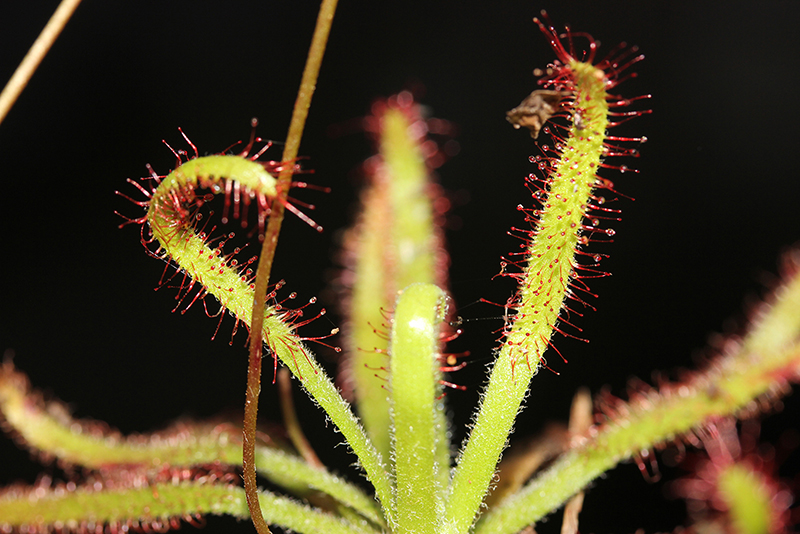Munich botanist discovers new carnivorous plant species from Madagascar
An international team of botanists from Madagascar, Brazil, France and the Bavarian State Collection for Botany (SNSB-BSM) have discovered and described a new carnivorous plant from the genus Drosera (sundews). The new species Drosera arachnoides is found only in Madagascar. The scientists have now published a detailed description of the new plant species in the scientific journal Plant Ecology and Evolution.
The animal and plant world of Madagascar is unique and a true hotspot of biodiversity. Researchers are constantly discovering new animal and plant species there – including botanist Dr. Andreas Fleischmann, curator at the Bavarian State Collection for Botany (SNSB-BSM). Together with Malagasy botanists from the Missouri Botanical Garden, who collected the plant in a remote area in eastern Madagascar in 2010 and 2016, the Munich Drosera expert has now published the detailed scientific description of the newly discovered species in the botanical journal Plant Ecology and Evolution. Fleischmann came across herbarium scans posted online on the pages of the herbarium of the Missouri Botanical Garden, USA, as well as photos of the herbarium specimens in the collection of the Natural History Museum in Paris. Close personal examination of the collected herbarium specimens brought unequivocal clarity. He determined that it was a new Malagasy sundew species. The “spider-like” appearance of the plant, with elongated, thin, hairy leaves led to the scientific name of the new species: Drosera arachnoides – the “spider-like sundew”. The plant is only about 2.5 – 6cm tall and grows in Madagascar on moist rocks of a waterfall in the tropical lowland rainforest in the Toamasina Province in the east of the island. Drosera arachnoides is a so-called endemic – the plant is found only in Madagascar. Until now, five sundew species were known from there. “This is the first newly described carnivorous plant from the island in over 40 years,” explains Andreas Fleischmann. Unfortunately, like so many of Madagascar’s plants and animals, it too is threatened by habitat destruction and has therefore already been classified as endangered on the International Union for Conservation of Nature (IUCN) list.
The genus Drosera, sundews, represents the largest group of carnivorous plants in the world and includes over 250 species. Most of them found in the southern hemisphere, especially in Australia, South Africa and Brazil. Sundew plants have leaves densely covered with carnivorous glands called tentacles that secrete sticky droplets of mucilage. These glistening droplets on the usually bright red tentacles are effective, attractive, yet deadly attractants for small animals, especially flying insects. In many sundew species, the tentacles and even the leaves are capable of movement, and curl around the captured prey, bringing it into contact with more and more of the sticky mucus, and eventually suffocating it. The prey is then digested by enzymes produced by the plant. The nutrients the plants get from this animal meal compensate for the nutrient-poor soils where the vast majority of carnivorous plants are found.
“The small new sundew Drosera arachnoides is not the legendary “man-eating tree Ya-te-veo” which, according to 19th century myths, is said to exist in the interior of Madagascar and to which the indigenous people are said to have offered human sacrifices. Our new sundew species is 100 times smaller than the invented plant of these stories. But it certainly represents a deadly trap for insects,” says Andreas Fleischmann.
Publication:
Fleischmann, A., Rakotoarivelo, N.H., Roccia, A., Gonella, P.M., Andriamiarisoa, L.R., Razanatsima, A. & Rakotoarivony, F. (2020). A new and endemic species of Drosera (Droseraceae) from Madagascar. Plant Ecology and Evolution 153(2): 283-291. https://doi.org/10.5091/plecevo.2020.1705
Contact:
Dr. Andreas Fleischmann
Botanische Staatssammlung München (SNSB-BSM)
Menzinger Str. 67, 80638 München
Tel.: 089 178 61 240
fleischmann@snsb.de



